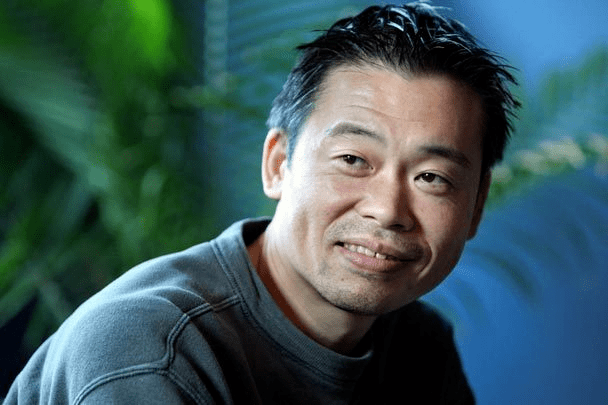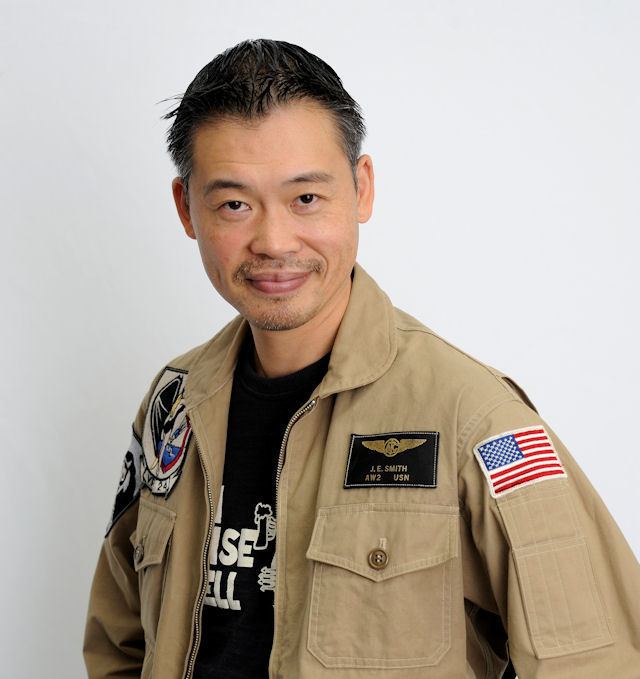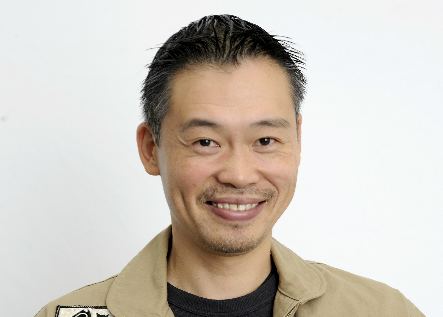Native name 稲船 敬二 Role Businessman | Name Keiji Inafune Years active 1987-present | |
 | ||
Video games Similar People Tokuro Fujiwara, Ian James Corlett, Scott McNeil, Kenzo Tsujimoto, Masaya Matsukaze Profiles | ||
Tyler s views on mightynumber9 and keiji inafune
Keiji Inafune (稲船 敬二, Inafune Keiji, born 8 May 1965) is a Japanese video game producer, illustrator and businessman. Starting his career at Capcom in the late 1980s, his job was as an artist and illustrator. The first Capcom game he worked on was the original Street Fighter in 1987. He was then an illustrator and artist of the Mega Man series during the NES and Super NES era. For Mega Man X, he created and designed the character Zero. After the departure of long time producer Tokuro Fujiwara, Inafune then moved onto the position of producer with his first title being Mega Man 8 in 1996. In addition to being the producer for Mega Man X4, Mega Man X5, the three Mega Man Legends games, the Mega Man Zero series, and the Mega Man Battle Network series. Inafune was also a producer of the Lost Planet, Dead Rising and Onimusha series. In 2006, he was promoted to Senior Corporate Officer and the head of Research & Development, in addition to Online Business and Global Head of Production at Capcom.
Contents
- Tyler s views on mightynumber9 and keiji inafune
- Our visit from keiji inafune
- Early
- Later
- Comcept
- References

After leaving Capcom in 2010, Inafune founded his own companies Comcept, Intercept, and DiNG, where he was CEO. Intercept worked on the Kaio: King of Pirates which was announced in 2011 and cancelled in 2015. While at Comcept, Inafune oversaw work on such as Mighty No. 9, Soul Sacrifice, the upcoming Red Ash: The Indelible Legend. In 2017, Comcept was purchased and became a subsidiary of Level-5.

Our visit from keiji inafune
Early
Inafune was born in Kishiwada, Osaka and he received a degree in graphic design in 1987 from the Osaka Designers' College. Soon after graduating the 22-year-old Inafune joined the Capcom corporation in 1987, in search of a job as an illustrator. Inafune had initially wanted to join Konami, but Capcom was much closer. In many early game credits at Capcom, he is credited under the name "INAFKING", which he got by combining the name "Snufkin" from the anime series Moomin with his own name.
Inafune joined the team developing the first Mega Man game (known in Japan as "Rockman") for the Famicom. Inafune designed several minor enemy characters, and also designed the boss character "Elec Man", who was the first original game character that Inafune designed. Inafune had tried to design him as if he was a character an American comic series such as Spiderman or X-Men. Inafune also drew the Japanese box art and promotional illustrations and worked on in-game animations and pixel art. Akira Kitamura, director for the game created the original static pixel art sprite for Mega Man. This was to ensure that the sprite could be properly seen against the game's backgrounds, and could work in the game. After that, the pixel art was handed over to artist Inafune, who created a refined illustration of the character. Inafune refers to this process as "like a reverse character design" as it is the opposite of what typically occurs, where artists create concept art which is then translated into game's graphics. During a special event at TGS 2007, Inafune clarified his role in the creation of Mega Man.
"I'm often called the father of Mega Man, but actually, his design was already created when I joined Capcom," he explained. "My mentor [Capcom senior member Akira Kitamura], who was the designer of the original Mega Man, had a basic concept of what Mega Man was supposed to look like. So I only did half of the job in creating him."
The first Mega Man game was released in December 1987, after which sales in both countries were decent, but as Inafune later notes, "While it did sell more than we had expected, [Rockman 1] wasn't a huge success as far as the numbers go." Inafune also worked on the original Street Fighter as a graphics designer which was also released in 1987. Noting the sales for Mega Man 1, Capcom superiors dictated that the team begin on a new project called Professional Baseball Murder Mystery (Pro Yakyuu? Satsujin Jiken), which was only released in Japan. Nevertheless, the team felt confident about the Rockman series, and urged that they be permitted to construct another iteration. Capcom allowed the team to continue, with the prerequisite to complete the port of Legendary Wings for the NES and Professional Baseball Murder Mystery as well. On December 24, 1988, released Rockman 2, with Mega Man 2 being released later in North America in 1989.
Starting with the second game, the team accepted robot master design ideas from the public, and it was Inafune's job to turn those winning designs into professional designs.
The next game in the series was Mega Man 3, released in Japan on September 28, 1990 and later released in North America in November 1990. Inafune considers Mega Man 3 to be one of his least favorite Mega Man games. From an interview with Nintendo Power in the October 2007 issue, Inafune explained that the reason was because of "...what went into the game and what was behind the release of the game." He also stated that the team was forced to put the game out before they thought it was ready and that during the game's production, the developers had lost the main planner, Inafune having to take his position. Inafune concluded, "I knew that if we had more time to polish it, we could do a lot of things better, make it a better game, but the company (Capcom) said that we needed to release it. The whole environment behind what went into the production of the game is what I least favored. Numbers one and two – I really wanted to make the games; I was so excited about them. Number three – it just turned very different."
The next original character design Inafune would create was the character "Punk" in the 1992 Game Boy game Mega Man III.
Capcom set on the development on a new series for the Super Nintendo, Mega Man X, which continued the plot of the original series, but set a darker tone and took place 100 years after the previous storyline. Inafune designed the character Zero for the games. "I didn't get to completely design a Mega Man [protagonist] from scratch until Zero (Mega Man X, SNES). Back when the SNES was coming out, I was asked to give Mega Man a redesign, so I created this character. But I realized that this design wouldn't be accepted as Mega Man, so I had another designer create the new Mega Man, and I worked on Zero to release him as the 'other main character' that would steal all the good scenes!"
Inafune produced the three-dimensional Mega Man Legends series after receiving requests from Sony to develop a new 3D Mega Man series exclusively for the PlayStation. Although he envisioned high sales and was an ambitious supporter to the development of the game, it was not a massive success and Inafune likens it to a "clumsy son". Inafune says it was quite difficult to promote the game, as there was little media interest in yet another Mega man title. Inafune was a promotion producer for Resident Evil 2, which in contrast to Mega Man Legends, had huge interest and was an easy game to sell.
Originally, Inafune had intended to end the series' plot at the installment of Mega Man X5, and had begun development on the Mega Man Zero series, in order to elaborate on the character of Zero. However, he had departed to another studio in cooperation with Inti Creates, and unbeknown to him, another installment, Mega Man X6, was created. This set a slight continuity error in Inafune's intended plot, but through some changes in the storyline, this was alleviated.
Keiji Inafune was producer for the Mega Man Battle Network series, which is set outside the continuity of the rest of the Mega Man story lines and introduced role-playing and strategic elements. According to Inafune, he received the basis for creating the series from observing his son. Inafune contributed the redesign of Mega Man for the first game, and he says it took quite a bit of convincing for the artists to let him do it, and even then they made additional changes to Inafune's redesign.
Later
On April 2, 2005, Inafune was promoted from corporate officer to senior corporate officer. Inafune also developed another series, the samurai-era Japanese themed Onimusha, which has spawned various sequels. Inafune and his team's next creation was Dead Rising for the Xbox 360. Dead Rising, initially started as a sequel to Shadow of Rome, with the same team members, before changing story, setting, and time period. The game is a zombie-slaying game heavily influenced by George A. Romero's 1978 movie Dawn of the Dead. It was released by Capcom in the U.S. on August 8, 2006.
Inafune was producer for Inti Creates' game Mega Man ZX.
Inafune had the idea of going back to the simple gameplay of the original Mega man series, and was producer for the game Mega Man 9. The game was developed by Inti-Creates along with Capcom, and Inafune contributed two designs for the project: Splash Woman and Plug Man. The game was followed up by a similar sequel, Mega Man 10 in 2010.
Inafune was producer for the Dead Rising 2, and opted to hire Canadian developer Blue Castle Games as developer rather than having it developed in-house at Capcom like the first game was. At the 2009 Tokyo Game Show while promoting the game, and speaking through his translator and Capcom employee Ben Judd, Inafune stated "Personally when I looked around [at] all the different games at the TGS floor, I said 'Man, Japan is over. We're done. Our game industry is finished.'" The game was released in 2010. In addition, he made his director debut in the short film series Zombrex: Dead Rising Sun.
The last mainline Street Fighter game was Street Fighter EX3 in 2000, and there was reluctance at Capcom at releasing another numeric entry in the series. Producer Yoshinori Ono pitched Street Fighter IV to Inafune, who was head of R&D at the time. Inafune approved the project, due to the positive reception to Street Fighter II' Hyper Fighting on Xbox Live Arcade and fans interest. Street Fighter IV was released first in arcades in Japan in 2008, and then on home consoles in 2009. The original console version of SFIV went on to sell 3.4 million copies.
On April 22, 2010, it was announced that Inafune would be Capcom's Global Head of Production. Inafune stated "I want to end comments that Capcom games made in Europe aren't really Capcom games ... basically saying that whether games are created in America or Japan or anywhere in the world, I will be the one overlooking it and so it will have that Capcom flavor that fans know and love." Inafune has voiced various negative views on Japanese game developers, stating that they are behind Western developers in innovation.
Comcept
On October 29, 2010, Inafune announced on his blog that he would be leaving Capcom with the intention of "starting his life over". He had been with the company for 23 years. On December 15, 2010, Inafune launched a new company called Comcept, and he launched another new company called Intercept. Comcept is a design and production studio, which does not develop games internally, but rather pairs up with studios to co-develop them. Inafune's guiding philosophy behind Comcept was to work on multiple games at once, work on ideas they themselves created, and to have flexibility of doing multiple genres. Inafune cites the need for flexibility as being necessary for the company to survive. During his time at Comcept, he was often given the credit of "Conceptor" on the games he has worked on.
Intercept began work on the game Kaio: King of Pirates, in 2012. Set for a release on the 3DS console, it was a pirate themed game starring loosely based on Journey to the West. The game was cancelled in 2015 by its publisher Marveolous Inc and they lost 461 million yen (roughly $3.8 million USD) on the project.
Inafune has made several cameo appearances in games. In the 2011 game Hyperdimension Neptunia Mk2, a scanned image of Inafune himself makes an appearance as a summon for the main character Nepgear during a special attack. Comcept was a co-developer along with Idea Factory on the otome game Sweet Fuse: At Your Side. A character bearing both Inafune's likeness and name appears in the game, who is a kidnapped uncle.
Yaiba: Ninja Gaiden Z was a collaboration between Comcept, Team Ninja and Spark Unlimited and it is a spin-off of the Ninja Gaiden series. Released in 2014 it received both poor sales and reviews. Inafune says poor timing is to blame for the sales, as players were transitioning to the PlayStation 4 console, and defends the title saying it had good gameplay.
On August 31, 2013, Inafune started a Kickstarter project for a game Comcept and Inti-Creates were working on that is a spiritual successor to Mega Man series, known as Mighty No. 9. After multiple delays, the game was released released in 2016 and was met with a mixed critical reception. A livestream on the Twitch platform was done during the release of the game. Speaking through his agent and translator Ben Judd, Inafune said: "You know, I want to word this in a way to explain some of the issues that come with trying to make a game of this size on multiple platforms." adding "I'm kind of loath to say this because it's going to sound like an excuse and I don't want to make any excuses. I own all the problems that came with this game and if you want to hurl insults at me, it's totally my fault. I'm the key creator. I will own that responsibility." Ben Judd added that he thought the game's problems stemmed from doing all the ports of the game and the base game at the same time, and that they had under-estimated the amount of work the project would require.
Inafune is an advisor for Inflexion Point Capital, who announced in 2014 that they would be giving out seed investments of 100 to 500 thousand to Japanese mobile developers.
At Electronic Entertainment Expo 2015 it was announced the Inafune was working with Armature Studio to make a new video game for the Xbox One called ReCore. On July 4, 2015 Inafune announced that he was once again using Kickstarter to fund a Mega Man Legends spiritual successor along with an anime based on the game called Red Ash, which failed to reach its funding goal.
In 2017, it was announced that Comcept was purchased by Level 5, headed by Akihiro Hino. Comcept then became "Level 5 Comcept", and Inafune became a CCO.
